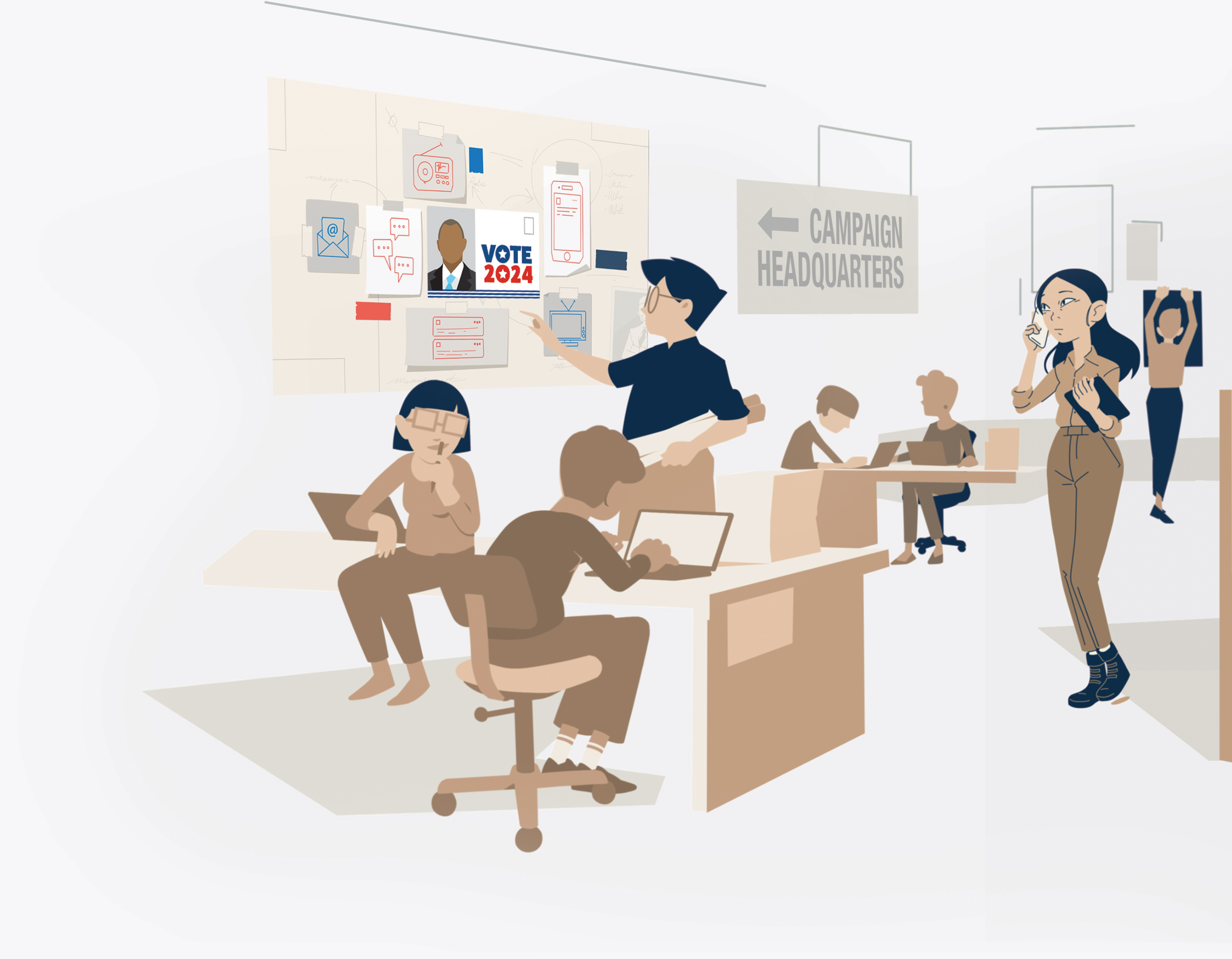How to Tackle Campaign Challenges with Direct Mail
Actionable Insights For Campaigns to DelivertheWin® this Election Cycle

Turning Challenges into Opportunities
This joint white paper with the American Association of Political Consultants (AAPC) captures current perceptions of political advertising channels from key bellwether gubernatorial and mayoral post-election voter surveys as well as insights from a campaign consultant survey and in-depth interviews.
These insights serve as a guide on how the voter relationship with direct mail can be the solution to the challenges campaigns are facing through tailoring, timing, and targeting.
Voter Insights #1
68% of Surveyed Voters Agree That Direct Mail Reinforces Information They Saw on Television and Online Political Advertising.
We can’t throw everything into one basket and think it’s going to solve it… you’ve got to pick the right mix and direct mail has to be part of that mix.”
Voter Insights #2
68% of Surveyed Voters Feel Less Overwhelmed by Direct Mail Than Other Political Advertising Channels, Such as Television or Online Ads.
Mail still has a lot of credibility compared to the other mediums… We’ve not only brought that message into their home but created a little bit of time for them to absorb it.”
Voter Insights #3
57% of Surveyed Voters Are More Likely to Read the Mail Piece If They Find It Visually Appealing.
If you have well done, well executed mail and you send it to the right people, you can be targeted and move certain voter segments… And I think it’s the only medium that can do that.”
The Solution to Campaign Challenges
The actionable insights captured in our white paper will help campaigns crack the code to better understand how to effectively influence, resonate, and motivate voters – and turn challenges into opportunities this election cycle.
Break Through the Clutter with the Right
Media Mix
Leverage the Unique Mail Moment®
Experience
Precisely Target Voters with Personalized Messaging
For More Actionable Insights
Download the Full White PaperA Joint Study by the United States Postal Service and American Association of Political Consultants (AAPC)
References
All 2023 election data sourced from consultant interviews and post-election surveys conducted on behalf of the Postal Service™ by Summit Research and KRC Research from September 2023 through January 2024. The research includes 11 in-depth interviews with campaign consultants, an online post-election survey of 171 campaign consultants, and an online post-election survey of 2,529 voters from Kentucky, Louisiana, Mississippi, Houston, TX, Columbus, OH, and Philadelphia, PA.









